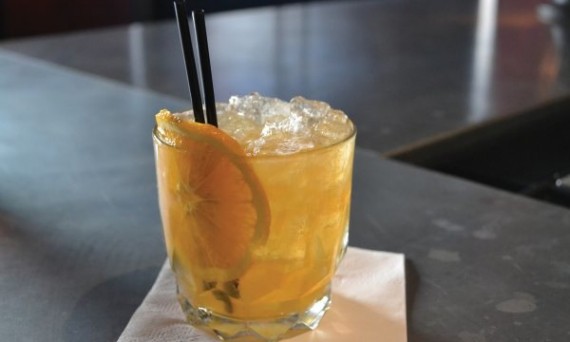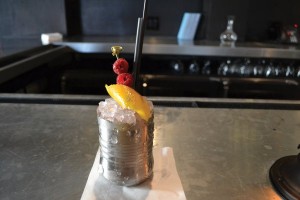Two hundred years ago, nearly nine years after Thomas Jefferson bargained with Napoleon, Louisiana became a state. Prior to that, she was swapped between European powers like a child of divorced parents. But on April 30, 1812, Louisiana—and by extension, New Orleans—became American. Given that New Orleans celebrates death more than most towns enjoy life, it is likely that a party or two was held on that April evening. With help from Neal Bodenheimer of Cure and Bellocq and Wayne Curtis—the author, cocktail historian and citywide cyclist—I wanted to find out what partying in New Orleans in 1812 would have been like.
Today, a cocktail is often a mixture of a base spirit, maybe fruit juice, perhaps bitters, and other ingredients. The first main issue is ice, or the lack thereof. “Culturally, ice was seen as dangerous; unhealthy even,” says Curtis. Frederic Tudor began shipping ice from New England to parts of the South as early as 1806, but the early years of his business were not very successful. “No way there was ice in April of 1812,” states Bodenheimer.
No ice means no cobblers—the delicious, refreshing quaffers on offer at Bellocq. Cobblers combine lower proof alcohols—typically vermouths, aperitifs, or sherry— with sugar, fruit juice and ice
into adult refreshments. Ice is an absolute necessity in the drink, lending not only a luxurious and elitist quality to the drink (in pre-air-conditioning days), but also naming the drink. “The drink
is named after the ice, which resembled cobblestone streets,” Bodenheimer explains.
At the time of impending statehood, a proper New Orleans home would have been stocked with Cognac, rum and a selection of fortified wines, such as sherry, port and most likely Madeira. Madeira, a fortified wine of Portuguese origin, floated aboard ships on popular trading routes, getting better with each rolling wave. As regular wine would spoil during the Atlantic passage, Madeira offered the homesick European a chance to enjoy the taste of wine, minus the aftertaste of spoilage. A barrel of Madeira would have been de rigueur in any French Quarter coffee house, so it is likely a Madeira or two would have been consumed to mark the transition of Louisiana from a territory to a state.
Whiskey from Kentucky, Illinois and Tennessee would have filtered down to New Orleans by 1812. However, that whiskey would have been White Dog—clear alcohol—with only a minimum amount of aging, flavoring and coloring from the barrels used to ship the hooch. Beers or ciders would have been rare. “Beer and cider were a farmer’s drink and they would have been consumed close to where they were made,” says Curtis.
One more element of most cocktails first docked at the Port of New Orleans around this time: bitters. Between 1809 and 1810, the population of New Orleans doubled. This was due in large part to Haitian slave revolts, which pushed out the French and free people of color, first to Cuba, and then to New Orleans. Various islands in the Caribbean developed bitters as a way to help mask the harshness of early distilled rums. When they migrated from island locales, those émigrés brought bitters, or the knowledge of making bitters, with them.
As for a specific cocktail that may have been on offer, a precursor to the sling or shrub would be the most likely. You may have found in your glass some Cognac or rum, a splash of bitters, some sugar and a citrus peel, a not too distant cousin of the Sazerac. “Or maybe a rum punch of some sort,” adds Curtis.
Most drinks consumed on the evening of April 30, 1812, would have been enjoyed at home. Socially and architecturally, the large mansions and homes in New Orleans were built and staffed for entertaining. Across the city, folks would have walked from house to house cheering or deriding the entrance of Louisiana into the Union. House staff, some the size of a restaurant brigade, would have filled glasses and goblets. As revelers strolled from house to house or from house to opera, street vendors sold snacks and alcohol from baskets draped around their neck.
As all good parties do, eventually it would have spilled out into the streets where the sounds of the party would have carried down the alleys. “The first ‘Americans’ to arrive in New Orleans were appalled at how the French and the Creoles walked around in their undershirts and slept outside. “There wasn’t much privacy in New Orleans, the streets were where life was lived,” says Curtis.
Drinking with friends, being too loud, and taking the party to the streets. That sounds like a New Orleans party. Some things never change.





